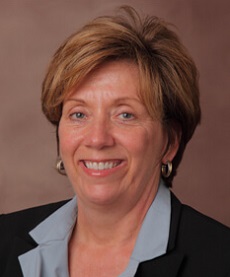Pre-Access Center Collects More Patient Financial Responsibility
Montefiore St. Luke’s Cornwall Hospital collects more than $1 million in patient financial responsibility now that a pre-access center improved the financial experience.

Source: Getty Images
- Since Jill Barton can remember Montefiore St. Luke’s Cornwall Hospital in New York has experienced financial challenges. But the non-profit hospital’s troubles were recently getting worse as patient financial responsibility considerably increased.
“We are an inner-city hospital with a very high share of government and self-pay patients. So, the hospital has had a more aggressive approach for collecting time-of-service and out-of-pocket expenses,” the hospital's current vice president of revenue cycle recently told RevCycleIntelligence.com.

Like many other hospitals across the country, St. Luke’s, which became part of the Montefiore Health System in 2015, struggled to balance delivering high-quality care to its 270,000 patients while collecting patient payments in a timely manner.
Patients spent an average of $1,103 in out-of-pocket costs in 2016, the Kaiser Family Foundation reports. And that amount is just going up. One report from TransUnion Healthcare shows that patient financial responsibility increased 11 percent in 2017.
With patients becoming increasingly responsible for total costs of care, providers are finding up to 88 percent more of their revenue is hinging on patient payments.
READ MORE: Key Ways to Boost Collection of Patient Financial Responsibility
For a non-profit hospital like St. Luke’s, the increase in patient financial responsibility spells trouble.
Hospitals that treat a higher proportion of Medicare, Medicaid, and uninsured or self-pay patients rely on commercially insured patients to pay their bills. Government payers reimburse hospitals significantly below actual costs of care, and hospitals are facing over $38 billion in uncompensated care costs from treating uninsured, self-pay, and other patients who cannot afford their portion of medical bills.
Improving the collection of patient financial responsibility was necessary for St. Luke’s own financial health. The hospital started to offer patients paperless billing, online payments, and short-term payment plans.
But Barton knew that to truly move the needle with patient collections the hospital needed to address the entire patient financial experience. Research shows that patients are more likely to pay their financial responsibility in full if they have a positive patient financial experience, which includes cost estimates, phone calls prior to appointments, and other consumer-focused services.
"We are in the era where we can improve the patient's financial experience, not just collect money from them," Barton said.
READ MORE: 3 Patient Collections Best Practices to Boost the Bottom Line
With the patient financial experience in mind, Barton and her team created a pre-access center resulted in millions of dollars more in patient payments being collected.
Pre-access center improves the patient financial experience
When Barton first started to tackle patient financial responsibility and collections, she noticed that the hospital needed a better front-end solution to verify insurance and collect upfront patient payments.
“We were primarily looking for a partner to help us with the front end to improve timely service collection and insurance verification,” she explained. “I interviewed the big vendors out there, but their price structure wasn’t realistic for us or the guarantee of an ROI wasn’t clear.”
Barton found the right solution through PatientMatters, a health IT company that offers solutions and services for hospitals looking to improve front-end processes and patient collections. The company partnered with St. Luke’s to implement a front-end system that significantly cut the time it took financial services staff to verify insurance.
As implementation progressed though, Barton realized that technology could not only help the hospital streamline insurance verification, but also enhance the entire patient financial experience starting at the point of registration.
READ MORE: Patient Financial Experience the New Focus for Revenue Cycle Tech
About a year into the process, the pre-access center was born.
The pre-access center brings together staff from scheduling, as well as other departments that handle front-end revenue cycle management tasks, such as prior authorizations and insurance verification. Together, the staff use the new front-end system and workflows to run price estimates, verify insurance, follow up on prior authorizations, and communicate all that information to patients before they even step in the door for their appointment.
“We used to have scheduling call and make an appointment. That was about it. We didn't give you an appointment time. You still had to come in the day of the appointment, stop at registration, and wait your turn,” she explained.
But through the pre-access center, the hospital could “enhance not only the staff’s knowledge of the patient and what their out-of-pocket might be but also patients could walk right in the front door on the day of their service and go to where they were having their service,” she said.
Through the pre-access center, staff call patients five days before an appointment to verify the service and run insurance. Using that information, staff also provide cost estimates prior to care delivery so patients come in the door knowing what they owe and how to pay.
Providing cost estimates prior to care delivery is especially important to improve the patient financial experience and collections.
Cost estimates enhance the patient financial experience
Currently, only about one-third of healthcare consumers who had to pay a medical bill said their provider called them prior to treatment to discuss patient financial responsibility and provide an estimate. As a result, two out of three patients visited their provider without any expectation that they owed money even though they did.
Failing to communicate out-of-pocket costs to patients before an appointment can lead to delayed payments and even bad debt.
With an improved financial experience at the top of their priority list, St. Luke’s gave their payer contracts to PatientMatters so the front-end system could use negotiated rates to calculate personalized cost estimates for patients. Pre-access center staff then use scripts to effectively discuss cost estimates with patients.
“You have to have that awkward conversation,” Barton explained. “We don't want long term arrangements. We are not a financing institution. We are a hospital. So, we've created a script for the team.”
“We ask if it would help to set up a payment plan and identify what the patient can afford,” she continued. “Depending on the answer, we've trained and scripted our staff to respond and collect the information we need to make that payment happen. And our staff can escalate the patient up if he says it’s too high of a dollar amount or he says there is no way he can pay the amount.”
The scripts are working for St. Luke’s. Prior to all the improvements and the creation of the pre-access center, the hospital was collecting about $400,000 a year in timely service payments. Now, the hospital exceeds $1 million a year in patient payments and the hospital is pushing for $2 million in 2019.
“You need to invest in the front-end by improving the quality of training and your staff’s ability to communicate and help people understand their health insurance,” she stressed. “We increased the level of education for our front-end staff so they can not only answer medical-related questions but also read the patient and understand their anxiety about the financial process as well.”
“Technology is definitely a very key component. But people are just as important,” Barton stressed.
